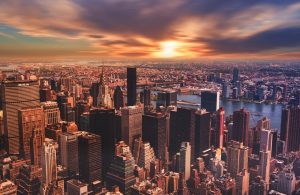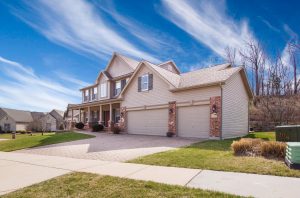Most massive cities around Australia have witnessed a rise in highrise improvements over the past five to ten yearss. As stated by the Australian Bureau of Statistics, the entire number of dwelling units in residential blocks of four or more storeys has jumped from 1412 in September 1994 to 3019 in September 2014. And according to the most recent ABS Year Book data, the amount of dwelling units approved by four or more storeys in 2010-2011 climbed by a substantial 70 percent. That means a whole lot of construction is intended for the highrise business.
City picture
Back in Sydney, highrises are getting to be the standard for future residential growth. Back in June, The Sydney Morning Herald reported that a spike in highrise improvements in Sydney, as a part of a government strategy to construct higher-density living near transportation hubs. In fact, it was recently announced that one Sydney development – One Central Park at Alexandria – has been called ‘Best Tall Building in the World’ from the Council on Tall Buildings and Urban Habitat (CTBUH) at Chicago, USA.
In Adelaide, developer Palumbo was ‘given the green light to construct highrise flats at Kent Town’, based on Adelaide Now. Palumbo is additionally in the early planning to get a 1200-home subdivision in Dublin, north of Adelaide, one of other multi-storey developments. All these developments require the cost of the materials needed in the project such as galvanised steel mesh panels, scaffolding, concrete, only to name a few.
Melbourne’s approach to highrise preparation is not any different. Victorian Minister for Planning Matthew Guy was recently quoted in The Sydney Morning Herald stating that Melbourne is in the middle of the largest building boom ‘because the gold rush’. Mr Guy, who has the ability to refuse or accept construction projects of over 25,000 square metres, informed SMH he has accepted 90 buildings inside the city region since coming to office in 2010. And no wonder for the advantages of highrise alive have stretched wide and far. Welded mesh suppliers are even benefitting from the boom, with foundation mesh panels needed as part of the foundation.
Sky-high advantages
In the government planning standpoint, the upside is apparent: higher-density residing to adapt an increased population and utilization of current amenities, such as transportation. For architects, investors and developers, it means bringing several investors to projects which push the ceiling when it comes to design, location, attractions and gains. And for taxpayers, it means simple, safe and convenient living combined with lifestyle advantages like transportation, stores and restaurants – all at your doorstep. Not only are highrises on the increase due to higher-density living initiative, but the role of luxury accommodation choices and buildings is also on the rise.
The disadvantage
Like each high-density-alive alternative, there are downsides, and also high-rises are not any different. The principal concerns from the area are all about health problems from residing within densely populated places. Air pollution, sound, general aesthetic and other elements will need to be taken under account.
By way of instance, residents in Yaroomba around the Sunshine Coast have started a petition from a brand new growth, stressing that the development will probably be too invasive and include 2300 flats, 300 condos, a 450-room 12-storey resort and 35,000 m2 of retail area.
Many developers are, nevertheless, on the front foot when it comes to environmental problems, and use strategies to decrease the effect such towering complexes might have about the environment and present facilities. Savills employed numerous plans with its 30-storey business tower in 1 Bligh Street, Sydney, such as a double glass skin made to give exceptional indoor environment quality.
The other concern is that using too many highrises in the current market, they could be overvalued for homebuyers. Canberra Times noted that REIWA lately warned homebuyers relating to this dilemma regarding improvements in the vicinity of Perth.
As city populations grow, we could expect to see additional highrises during the next five to 10 years. If you are trying to purchase a highrise flat for lifestyle or investment functions, consider your time, do your homework and evaluate the consequences on market development. Purchase wisely, and you might be grinning from amazing new heights. Highrises are also increasing near or around waterfront locations, with the tourism of waterfront accommodation highrises the main driver.

Sydney is Fast Becoming One Giant Construction Site
Welcome to Sydney, Australia’s largest crane capital, and very much under construction.
In January, the New South Wales Government cautioned Sydneysiders to get ready for a “year of building”, and pleaded for inspiration while important road and railroad projects were assembled.
But would the detours be worthwhile?
Quantity surveying firm Rider Levett Bucknall (RLB) this week published its quarterly crane indicator, which reveals of those 685 cranes working on jobs in Australia, 350 of these have been in Sydney. Barangaroo was a hotspot for building in the previous decade, with the majority of functions, due to be finished by ancient 2021.
NSW Treasurer Dominic Perrottet stated the cranes represented NSW’s infrastructure schedule. Every crane in the sky is much more proof of another dwelling, another college, another hospital, yet another company within the funding.
You will find only 151 cranes working on jobs in Melbourne, while Sydney’s stats also spanned Brisbane (85) and the Gold Coast (31). The figures signify a building boom in Australia’s largest city, with jobs such as the $17 billion motorway extravaganza WestConnex, NorthConnex, Sydney Metro — that includes an estimated price tag of around $11 billion – along with two light rail lines being assembled.
And there is more to include updates to many sporting arenas from the pipeline and work to start on the newest western Sydney airport from 2026.
In NSW, building work grew by 7.5 percent at the 2016-17 fiscal year, together with residential action up 12 percent.
A number of the cranes are dispersed throughout Sydney suburbs, contrary to other towns that have cranes closer into town center. The Sydney suburbs with the most crane action comprise Epping with 16, Parramatta (10) and Wolli Creek (13) – in which an apartment building needed to be evacuated last month following a local crane fall.
John Cross from quantity surveying firm RLB said the index indicates a nationwide tendency to high-density living. The crane hire indicator is an extremely simplified step of the present condition of the bigger construction jobs in Australia.
The Wolli Creek incident wasn’t the only accident in August, with the other crane toppling into Sydney Harbour and damaging the famous “face” entrance at Luna Park. There are 17 crane jobs in Adelaide, 18 in Canberra, 25 at Perth and only three at Hobart. The coastal NSW town of Newcastle has five crane jobs and you will find not any in Darwin.





